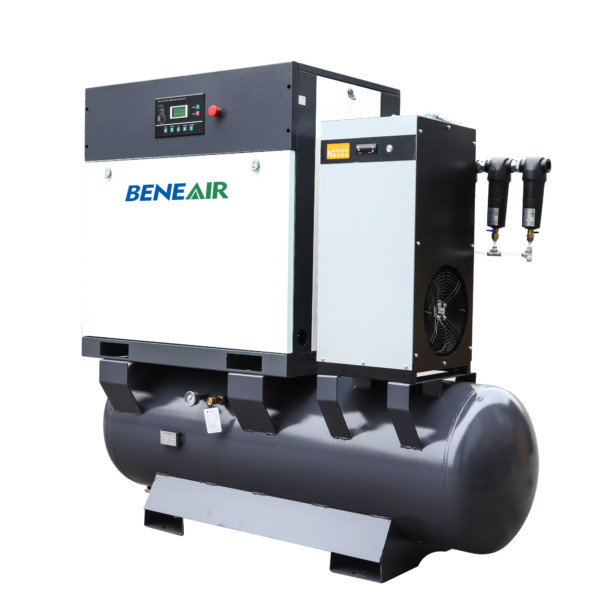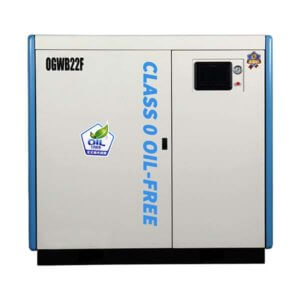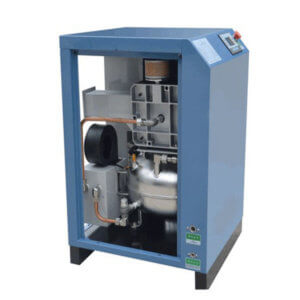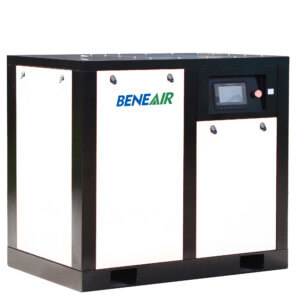Contents
A screw-type air compressor is a machine that compresses air and stores it in tanks. The compressed air can then be used to power tools, run appliances, or any other device that uses air pressure. If your screw-type air compressor is not performing as well as it should, the system may leak. This article will show you how to find and fix your screw-type air compressor system leaks.
Finding Leaks
Finding Leaks
Leaks in an air compressor can be hazardous because if the pressure escapes, it could cause an explosion. For this reason, you must find and fix leaks as soon as possible. Here are a few steps to use when trying to locate a leak:
1) Look for damp spots
If there is a leak, moisture will form around the area where the air is escaping.
2) Listen for hissing or whistling sounds
If a leak is present, air will escape creating noise from tiny hisses to loud whistles depending on how big the leak is.
3) Use soap and water
If you spray soapy water over your connectors and fittings, bubbles will appear where there are leaks. It requires attaching each fitting and part of the system to turn it on. Once you have attached each fitting, spray soapy water over the area and look for bubbles that appear where there is a leak.
4) Look for rust
Air leaks often create pitting around the areas they escape from, which will cause rusting.
5) Check all valves
A valve can become stuck, allowing air to escape from the system. A stuck valve should be replaced or repaired by a professional mechanic.

Ultrasonic Leak Detection
Ultrasonic Leak Detection
Another effective way of finding leaks involves using an ultrasonic leak detection system. Ultrasonic systems work by sending high-frequency sound waves through the air; if there is a leak, these waves will bounce back and create an image of where the leak is located.
This image can be seen on a computer monitor or printed out with special equipment. Ultrasonic leak detection systems can help you find even the most minor leaks in your system.
Repairing Leaks
Repairing Leaks
Once you have found where a leak exists, there are several ways to repair it. Here are some practical methods for repairing air compressor leaks:
1) Solder or epoxy
Solder is a metal alloy that comes in wire form and will melt when heated by an electric soldering gun. Liquid solder also comes in different colors, making it easier to see where the solder has been applied. Epoxy works similarly to solder but is very thick, so it should be used sparingly.
Once the area has been heated, either solder or epoxy can be applied with a thin-tipped tool or squeegee and then cool before moving on to the next step.
2) Clamp or bolt
If a leak is around a bolt, clamping it down may be enough to fix the issue. If the leak appears near a hole in a fitting, you can put a bolt through the hole and tighten it down onto another part of the system.
3) Plug fittings
Various types of plug fittings can be used to repair leaks depending on where they appear in your air compressor system. For example, if there is a leak at an end fitting, an end cap will work fine; an automotive-style plug would work well if one were dealing with a tire valve.
4) Wrap with tape
If an air compressor fitting or connection has a tiny leak, wrapping it with Teflon tape may be effective. Put just enough tape on so that when you wrap it around the area, it covers, but no more than that. In general, using too much Teflon tape just makes for a messy-looking repair job!
5) Replace fittings
Sometimes fittings need to be replaced because they are defective and allow air to escape from them (stuck). If your screw-type air compressor plugs leak, replace them.
6) Replace compressor valves
Most air compressors come with a set of rubber or soft plastic “O” rings. Over time, these can break down and cause leaks. If you find that your valve is leaking around the shaft where it screws into the cylinder head, then the O-rings need to be replaced. A professional mechanic should do this as it requires special tools.
7) Replace the entire cylinder-head
If all else fails and there are no quick fixes for repairing an air leak on your system’s valves, replacing them will usually do the trick as they are sometimes made from defective materials such as bad castings, which may have blown out holes. Leaking valves are also a symptom of defective cylinder heads which need replacing.
How to Prevent Leaks
How to Prevent Leaks
There are several easy ways you can prevent leaks from occurring in your air compressor system, such as:
Maintain the correct pressure
Keep your fill-up gauge and regulator set at the appropriate levels for how much pressure is needed to run the tools you need. This ensures that there won’t be excessive air leaking out of either cylinder head (compressor tank).
Inspect and replace worn parts
Inspect all of your fittings and rubber O rings often to make sure they aren’t broken or cracked; replace them before they break down, which will help decrease leaks.
Keep it clean
Make sure that your equipment is appropriately cleaned and de-greased before taking care of an air leak. If you don’t, the area affected by a leak will be pretty messy and may make finding and repairing the issue more complicated than it needs to be.
Keep it oiled
Make sure your air compressor is properly oiled. If the pump is not lubricated, it will quickly wear down and cause leaks from several different places in your system.
By following these tips, you can help reduce the likelihood of leaks in your air compressor system and keep your equipment running smoothly for years to come.
Leaks are an unfortunate but standard issue in any air compressor system. However, most leaks can be easily fixed using one of the above methods. Remember always inspect your equipment for wear and tear and replace any defective parts before they cause further damage. And, lastly, remember to keep your compressor clean and well-oiled for optimal performance.










Leave A Comment